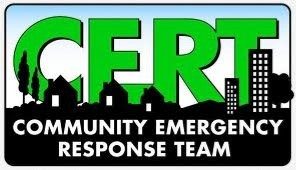Role of CERT communications
Intra-Team (CERT) Communications
One communications function that team members will participate in during an activation is intra-team communications.
Effective intra-team communications allows volunteers to quickly and effectively communicate to one another. It is a critical component of tasks such as light search and rescue.
Intra-team communications may be as simple as sending runners from one group to another or may involve the use of handheld radios and transmitting using Net Control protocols.
Some tasks that intra-team communications may be requested to perform are:
- Providing an update to the CERT’s command post from an incident site
- Alerting residents by going door-to-door
- Assisting first responders directly with traffic control or crowd controls
- Acting as eyes and ears of first responders
- Coordinating CERT groups working at different sites in the neighborhood or building
The Claremont CERT team is unique in it’s access to radio communications. The Claremont Police department provides professional quality equipment along with the ability to use first responder frequencies during exercises and emergency situations.
This equipment does not necessarily meet the needs of Intra-team communications, since there is constant radio traffic and communications must comply with first responder rules and regulations.
When Claremont CERT is working in any situation the preferred method of communications with intra-team members is face to face, using runners, or by using FRS/GMRS radios. These radios provide a very short distance communication, no license is required for the FRS frequencies and there is no requirements on how communications are managed. GMRS radios share some of the same frequencies that the FRS service uses, however GMRS is a licensed service. The primary difference is that once you have obtained your GMRS license you are allowed to transmit at a much higher power which will provide a greater distance of communications. To obtain the GMRS license does not require any exams, just a application and a fee. The license will allow you and your family to use the GMRS communication for 10 years before you have to renew.
Another means of communication is by use of HAM or Amateur radio equipment. This equipment is personally owned and operated and does require a license for each operator. This method of communication may be used for intra-team as well as communications with the command post or emergency responders. There are requirements on how communications are sent, but english language is used, no special codes are required.
Claremont CERT participates with a local Amateur radio group called FACTAR. (Foothill Area CERT Teams Amateur Radio) This is CERT members from the surrounding communities that join together at designated times to refine their skills of using radio communications and preparing for disasters that may occur in the area. This group is open to any amateur operator that may wish to participate. If you wish to participate please send an email to factar@googlegroups.com.
Communicating Up to the Next Level
One of the most important roles that CERT volunteers fulfill is acting as “eyes and ears.” CERT volunteers, working alongside professional emergency responders during an emergency, are expected to be able to communicate back to the professionals. In this way, the professionals can be dispatched to where they are most needed, and the CERT volunteers act as “force multipliers” for the professional responders.
However, each volunteer cannot simply radio all emergency personnel at the moment he or she needs them. This would rapidly devolve into chaos. Instead, each CERT and jurisdictional office of emergency management has its own protocols for how emergency response groups coordinate communication. This is called a communications plan, and it defines who talks to whom.
Communications Promotes Safety
One of the most important functions of communications is to promote safety—both the safety of the responder as well as the safety of the individual affected in an emergency. An effective communications network allows:
- A responder to quickly call for help when it is needed.
- A responder to notify others of potential safety concerns in the area.
- A team leader to keep track of volunteers; this is called accountability.
